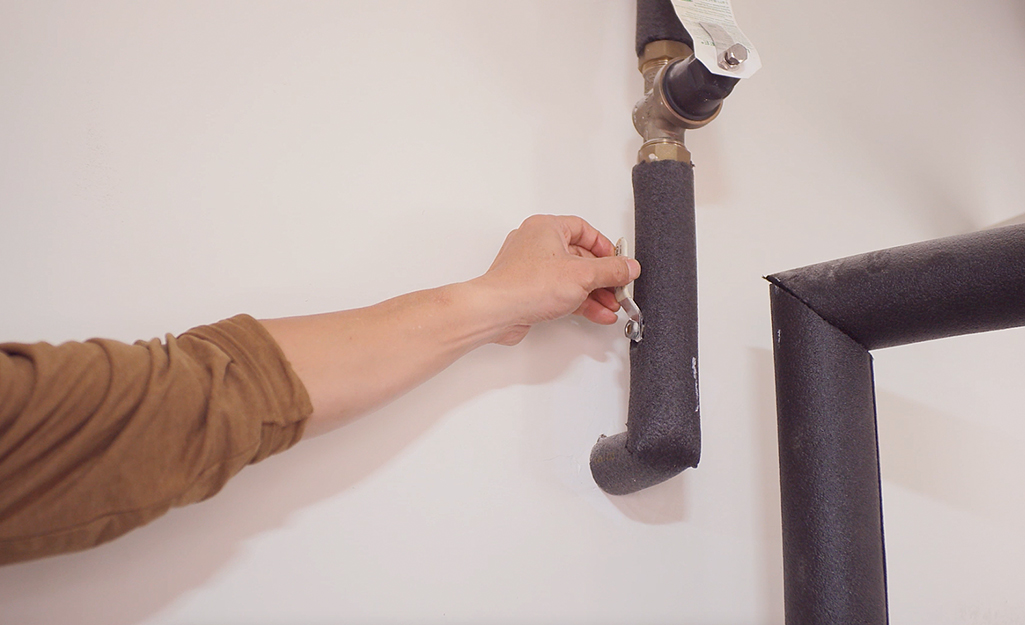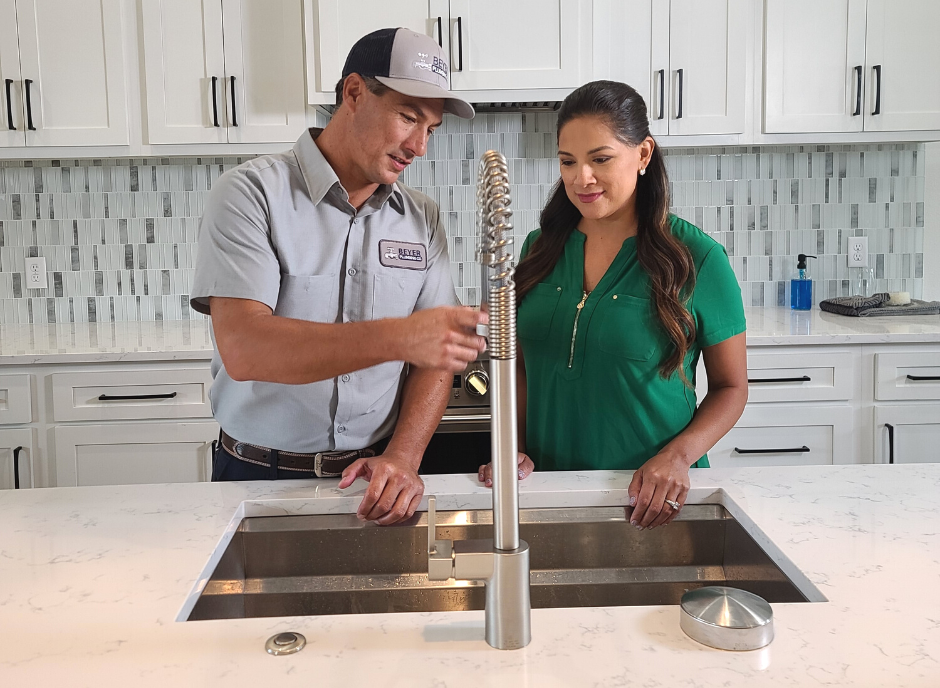When It's Important to Resolve a Leaking Faucet
When It's Important to Resolve a Leaking Faucet
Blog Article
This great article below relating to Why Are My Faucets Dripping (And Can I Fix It Myself)? is indeed informative. Read it for yourself and figure out what you think about it.

Leaking taps may feel like a small inconvenience, but their impact goes beyond just the inconvenience of the audio. From drainage to incurring unnecessary economic expenses and health threats, neglecting a leaking faucet can bring about different effects. In this write-up, we'll explore why it's critical to address this usual family issue quickly and successfully.
Wastage of Water
Ecological Effect
Dripping faucets contribute significantly to water waste. According to the Epa (EPA), a solitary faucet trickling at one drip per secondly can lose more than 3,000 gallons of water each year. This not just stress water resources but also affects ecosystems and wildlife depending on them.
Step-by-Step Overview to Taking Care Of a Dripping Tap
Tools Required
Before trying to take care of a leaking faucet, gather the necessary tools, consisting of a flexible wrench, screwdrivers, substitute parts (such as washers or cartridges), and plumber's tape.
Usual Tap Issues and Their Solutions
Determine the type of tap and the certain problem causing the drip. Usual issues include worn-out washers, rusty valve seats, or defective O-rings. Describe producer instructions or on the internet tutorials for step-by-step support on fixings.
Financial Costs
Boosted Water Bills
Past the ecological effect, trickling faucets can pump up water costs significantly. The collected wastefulness in time converts into greater energy expenses, which might have been avoided with timely repairs.
Prospective Building Damage
Additionally, prolonged dripping can lead to harm to components and surfaces bordering the tap. Water build-up can trigger discoloration, rust, and also structural concerns if left neglected, causing added repair service costs.
Wellness Issues
Mold And Mildew and Mildew Development
The constant presence of moisture from a leaking faucet creates a suitable setting for mold and mold growth. These fungis not just compromise interior air top quality however also posture wellness dangers, especially for individuals with respiratory system conditions or allergic reactions.
Waterborne Diseases
Stagnant water in dripping taps can come to be a breeding place for microorganisms and various other microorganisms, raising the threat of waterborne conditions. Pollutants such as Legionella microorganisms prosper in stationary water, possibly leading to significant ailments when consumed or inhaled.
Do it yourself vs. Specialist Fixing
Advantages and disadvantages of Do It Yourself Repair Service
While some may attempt to take care of a leaking tap themselves, do it yourself repair services include their own collection of difficulties. Without appropriate expertise and devices, DIY efforts can intensify the concern or bring about incomplete repair services, prolonging the problem.
Advantages of Working With a Professional Plumber
Employing an expert plumber makes sure that the underlying root cause of the dripping tap is resolved successfully. Plumbings have the expertise and devices to identify and repair tap issues efficiently, saving time and reducing the threat of additional damages.
Ecological Obligation
Private Payment to Conservation
Taking obligation for dealing with trickling taps straightens with wider initiatives toward water conservation and environmental sustainability. Every individual's activities collectively make a considerable effect on preserving precious sources.
Sustainable Living Practices
By focusing on prompt repairs and taking on water-saving habits, individuals add to lasting living methods that benefit both present and future generations.
Preventive Measures
Normal Upkeep Tips
To avoid dripping taps, carry out routine maintenance such as cleaning aerators, examining for leaks, and replacing damaged parts immediately. Additionally, think about installing water-saving devices or updating to much more efficient components.
Relevance of Prompt Fixes
Dealing with dripping taps as soon as they're noticed protects against further water waste and possible damages, inevitably conserving both water and money in the long run.
Effect On Residential Property Worth
Perception of Well-Maintained Property
Maintaining a building in good condition, including resolving maintenance concerns like leaking taps, boosts its perceived value and worth among prospective buyers or renters.
Influence on Resale Worth
Residences with well-kept plumbing components, including faucets, command higher resale values in the real estate market. Dealing with dripping faucets can add to a favorable impact throughout building inspections and settlements.
Verdict
Attending to a leaking faucet surpasses simple ease; it's a vital action toward conserving water, decreasing economic expenses, and safeguarding health and home. Whether with DIY repair services or professional assistance, doing something about it to repair trickling taps is a small yet impactful method to advertise liable stewardship of resources and add to a much healthier, a lot more sustainable future.
How to Fix a Dripping or Leaky Faucet
A leaking faucet is one of the most common problems that homeowners encounter, but it being commonplace doesn’t make it any less annoying. The constant drip drip drip of a leaking bathtub faucet, showerhead, or sink tap can disturb your home’s serenity. Left neglected, a dripping faucet can also result in higher water bills and discoloration or mold growth in your sink or plumbing fixtures.
Fortunately, you don’t have to be a trained plumber to know how to stop a dripping faucet. With some basic tools, replacement parts, and a little patience, leaky faucet repair is a breeze. In this article, we’ll explain what causes dripping faucets and how you can fix them.
What Causes a Leaking Faucet?
Kitchen and bathroom faucets come in all manner of designs, but most involve some combination of valves, O-rings, seals, and washers. The O-ring is usually the weakest link, but any one of these pieces can wear down over time. Heat, moisture, temperature fluctuations, minerals, mold, and movement can contribute to warping and corrosion, breaking the watertight seal. This just comes with the territory of being a homeowner. Everything is always subject to wear and tear, and some component parts of your appliances and fixtures need to be replaced on occasion. At least replacement O-rings are cheap!
More rarely, dripping faucets can be a symptom of excessively high water pressure. Were this the case in your home, you would probably notice that the leak is not isolated to one faucet. Water pressure issues are harder to resolve on your own. We recommend contacting a professional plumber if you suspect your water pressure is too high.
How to Fix a Dripping Faucet
Pipe wrench or monkey wrench Allen wrench set Screwdrivers Old towel or rag Shut off the water.
Before you do anything, you need to turn off the water to keep from drenching your kitchen or bathroom. You should find a valve under the sink and against the wall. Once you’ve turned this valve, try turning the faucet on to confirm that the water source has been cut off.
If you can’t locate your local valve for the faucet you’re working on, you can always shut off the water to the house at the main valve. Of course, this will prohibit anyone from using the sinks, showers, or toilets while you’re working on the faucet that’s giving you trouble.
Plug or block the drain.
You’ll be disassembling the faucet and removing some small bits of hardware. Plug the drain with a stopper or rag to avoid the possibility of a small screw falling into your P-trap.
Take apart the faucet assembly.
There are several varieties of kitchen and bathroom faucets, each with its own manner of assembly. For detailed instructions on how to disassemble your faucet, you can refer to the fixture’s manual or contact the manufacturer. If you know whether you have a ball, disc, cartridge, or compression faucet, you can find detailed schematics online.
In general, you need to begin by removing the faucet handles. You might notice a small screw that you’ll need to remove with a screwdriver or Allen wrench. If you don’t see any visible securing hardware, it’s likely hidden under a decorative cap that can be unscrewed or popped off with flathead screwdriver.
Remove each piece methodically, consulting a schematic when necessary. Take notes or arrange the pieces in such a way to make it easier to correctly reassemble the faucet later.
Remove the cartridge.
Once you’ve removed the handles and securing hardware, you should be able to remove the valve cartridge or stem. Some cartridges will slide right out. Other faucet models will require you to loosen a nut with a pipe wrench before you can remove the valve stem.
Examine the exposed hardware.
With the cartridge or stem removed, inspect the component parts. Check the rubber O-rings for wear and tear. Also examine the seat washer for corrosion or other damage. These pieces are usually the responsible parties for a dripping faucet, but it’s worth inspecting the other component parts while you have the faucet disassembled.
Find replacement parts.
Once you’ve identified which faucet component has failed, find an identical replacement. Your local hardware store should have O-rings, seat washers, and other standard components in stock. If you have a luxury or uncommon faucet, you may have to contact the manufacturer for a replacement part.
It’s a good idea to take your old parts with you to the hardware store so you can compare them with the store’s inventory and be sure you’re purchasing the correct replacement.
Reassemble the faucet.
With your new parts in hand, reconstruct the faucet and handles. Don’t be tempted to overtighten screws or nuts. You might think this could create a better seal, but it can instead damage or bend a delicate part of the assembly and create a new problem for you.
Turn on the water and test the faucet.
The only thing left to do is test your work. Unplug the sink, turn the water back on, and try the faucet. Congratulate yourself on a job well done!
https://www.libertyhomeguard.com/how-to-fix-a-dripping-or-leaky-faucet/

I ran across that piece on Should I Repair or Replace a Leaky Faucet? when scouting around the web. Remember to take the time to distribute this article if you appreciated it. I take joy in your readership.
Report this page